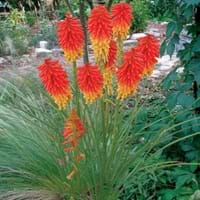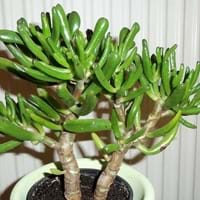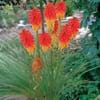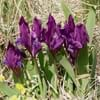Life Span
Perennial
Perennial
Type
Perennial
Cactus or Succulent, Shrubs
Origin
Hybrid origin
Southern Africa, South Africa
Types
Not Available
Crassula portulaca,Crassula argentea
Number of Varieties
Not Available
Habitat
Damp Places, Marshy ground
Deciduous forests, Desert, Rocky Ridges, Semi desert
USDA Hardiness Zone
6-9
9-13
Sunset Zone
2a, 2b, 3a, 3b, 4, 5, 6, 7, 8, 9, 14, 15, 16, 17, 18, 19, 20, 21, 22, 23, 24
H1, H2, 8, 9, 12, 13, 14, 15, 16, 17, 18, 19, 20, 21, 22, 23, 24
Habit
Clump-Forming
Oval or Rounded
Flower Color
Yellow, Red, Orange, Pink
White, Light Pink, Ivory
Flower Color Modifier
Bicolor
Not Available
Fruit Color
Not Available
Not Available
Leaf Color in Spring
Green, Blue Green
Green, Olive, Dark Green
Leaf Color in Summer
Green, Blue Green
Green, Olive, Dark Green
Leaf Color in Fall
Blue Green, Gray Green, Light Yellow
Green, Olive, Dark Green
Leaf Color in Winter
Light Green
Red, Olive, Dark Green, Bronze
Plant Season
Spring, Summer
Spring, Summer, Fall, Winter
Sunlight
Full Sun, Partial Sun
Full Sun, Partial Sun
Growth Rate
Medium
Medium
Type of Soil
Clay, Loam, Sand
Loam, Sand
The pH of Soil
Acidic, Neutral
Neutral
Soil Drainage
Well drained
Well drained
Bloom Time
Early Summer, Summer
Early Spring, Spring, Early Winter, Winter, Late Winter
Tolerances
Drought
Drought
Where to Plant?
Container, Ground
Container, Ground
How to Plant?
Divison, Seedlings
Budding, Leaf Cutting, Stem Planting
Plant Maintenance
Medium
Medium
Watering Requirements
Needs more water during establishment, Water Deeply, Water in morning to avoid prompting diseases, Water in the early morning hours
Allow soil to be completely dry in between waterings, Never Over-water
In Summer
Lots of watering
Moderate
In Spring
Moderate
Drought Tolerant, Average Water
In Winter
Average Water
Less Watering
Soil pH
Acidic, Neutral
Neutral
Soil Type
Clay, Loam, Sand
Loam, Sand
Soil Drainage Capacity
Well drained
Well drained
Sun Exposure
Full Sun, Partial Sun
Full Sun, Partial Sun
Pruning
Cut or pinch the stems, Remove damaged leaves, Remove dead branches, Remove dead leaves
Remove damaged leaves, Remove dead branches, Remove dead leaves
Fertilizers
All-Purpose Liquid Fertilizer, Apply N-P-K
All-Purpose Liquid Fertilizer
Pests and Diseases
Onion thrips, Red blotch, Root rot
Red blotch
Plant Tolerance
Drought, Moisture
Drought
Flower Petal Number
Single
Single
Foliage Texture
Coarse
Bold
Foliage Sheen
Matte
Glossy
Attracts
Snails
Ants, Caterpillar
Allergy
Not Available
allergic conjunctivitis, Dizziness, Mouth itching, Vomiting
Aesthetic Uses
Borders, Cottage Garden, Ground Cover
Beautification, Bonsai, Cottage Garden
Beauty Benefits
Not Available
Acne, Making cosmetics, Natural Sunscreen, Nourishes scalp, Stops hair loss
Environmental Uses
Air purification
Provides ground cover, soil stabilisation
Medicinal Uses
Not Available
Acne, Antibacterial, Eczema, epilepsy, Gout, Laxative
Part of Plant Used
Not Available
Leaves, Sap, Stem
Other Uses
Not Available
Cosmetics, Used as Ornamental plant, Used for its medicinal properties
Used As Indoor Plant
No
Sometimes
Used As Outdoor Plant
Yes
Yes
Garden Design
Container, Cutflower, Mixed Border, Rock Garden, Wall
Container, Feature Plant, Foundation, Houseplant, Mixed Border, Rock Garden, Wall, Tropical
Botanical Name
KNIPHOFIA 'Border Ballet'
CRASSULA ovata
Common Name
Tritoma, Wisley Blue Spring Starflower, Wisley Blue Springstar
Jade Money Plant
In Hindi
Tritoma
जेड पौधा
In German
Tritoma
Geldbaum
In French
Tritoma
Crassula ovata
In Spanish
tritoma
Crassula ovata
In Greek
tritoma
Crassula ovata
In Portuguese
Tritoma
Crassula ovata
In Polish
Tritoma
Grubosz jajowaty
In Latin
Trytoma
Crassula ovata
Phylum
Tracheophyta
Magnoliophyta
Class
Magnoliopsida
Magnoliopsida
Order
Asparagales
Rosales
Family
Liliaceae
Crassulaceae
Clade
Angiosperms, Monocots
Dicotyledonous
Tribe
Not Available
Not Available
Subfamily
Not Available
Crassuloideae
Season and Care of Tritoma and Jade Plant
Season and care of Tritoma and Jade Plant is important to know. While considering everything about Tritoma and Jade Plant Care, growing season is an essential factor. Tritoma season is Spring and Summer and Jade Plant season is Spring and Summer. The type of soil for Tritoma is Clay, Loam, Sand and for Jade Plant is Loam, Sand while the PH of soil for Tritoma is Acidic, Neutral and for Jade Plant is Neutral.
Tritoma and Jade Plant Physical Information
Tritoma and Jade Plant physical information is very important for comparison. Tritoma height is 45.70 cm and width 50.80 cm whereas Jade Plant height is 60.00 cm and width 60.00 cm. The color specification of Tritoma and Jade Plant are as follows:
Tritoma flower color: Yellow, Red, Orange and Pink
Tritoma leaf color: Green and Blue Green
Jade Plant flower color: White, Light Pink and Ivory
- Jade Plant leaf color: Green, Olive and Dark Green
Care of Tritoma and Jade Plant
Care of Tritoma and Jade Plant include pruning, fertilizers, watering etc. Tritoma pruning is done Cut or pinch the stems, Remove damaged leaves, Remove dead branches and Remove dead leaves and Jade Plant pruning is done Remove damaged leaves, Remove dead branches and Remove dead leaves. In summer Tritoma needs Lots of watering and in winter, it needs Average Water. Whereas, in summer Jade Plant needs Moderate and in winter, it needs Less Watering.





